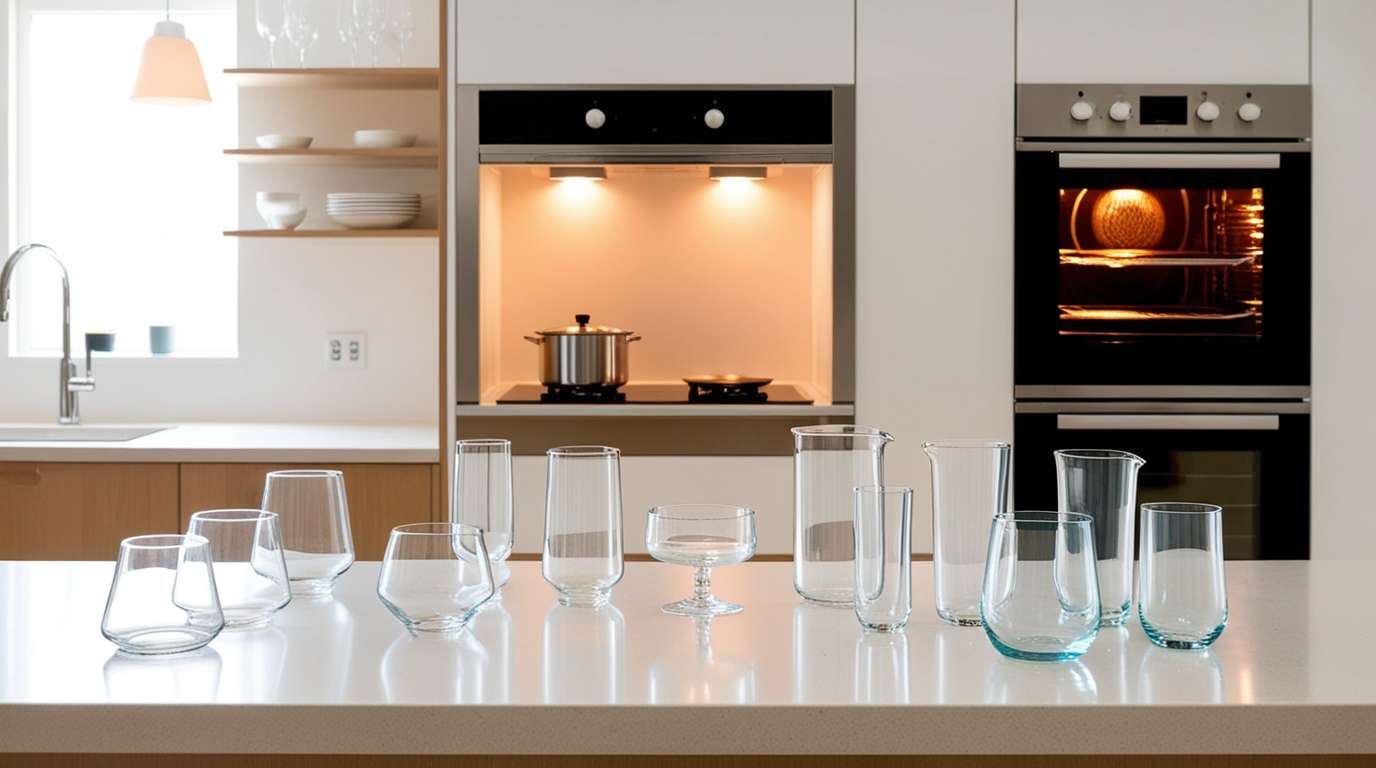
Ever looked at your favorite glass dish and wondered, “Can this go in the oven?” You’re not alone. Many home cooks and bakers face this question when preparing meals or desserts. While glassware is known for its beauty and versatility, not all types can handle the intense heat of an oven. Using the wrong kind can lead to cracks—or worse, shattered glass and a big mess.
In this blog, we’ll explore everything you need to know about using glassware in the oven — which types are safe, how to prevent damage, and the best tips for baking and cooking safely.
Glassware comes in different types, and each reacts differently to heat. The key is understanding the kind of glass you’re working with.
Here are the main types:
This type of glass is heat-treated to withstand sudden temperature changes. It’s commonly used in bakeware like Pyrex or Anchor Hocking dishes. Tempered glass is oven-safe, but even it has limits—extreme temperature shocks can still cause it to crack.
Known for its excellent heat resistance, borosilicate glass is the gold standard for oven use. It can handle higher temperatures and sudden changes better than tempered glass. This type is used by brands like Pyrex (in some regions) and Duralex.
This is the most common glass used for drinking glasses and decorative bowls. However, it’s not safe for oven use. Soda-lime glass can easily shatter when exposed to high heat because it’s not designed to expand and contract safely.
Crystal glass is beautiful and elegant but highly sensitive to temperature. It’s strictly for serving and decoration, never for oven use. The high lead or metal oxide content in crystal makes it prone to cracking under heat.
Not sure what kind of glass you have? Here are some quick ways to find out:
Look at the bottom or side of your glassware. Oven-safe glassware usually has markings like “Oven Safe,” “Heat Resistant,” or brand logos that specify usage.
If you still have the packaging or can find the product online, check the brand’s website. They’ll mention whether the product can safely go in the oven.
If the glassware doesn’t mention being oven-safe, it’s better to assume it’s not. It’s not worth risking an explosion of glass in your oven.
Here are some common oven-safe glassware types you can trust:
Glass Baking Dishes: Perfect for casseroles, lasagna, baked pasta, and desserts.
Glass Pie Dishes: Ideal for evenly baked pies and tarts.
Glass Storage Containers (With Oven-Safe Labels): Great for reheating leftovers in the oven — just remember to remove the plastic lids!
Glass Measuring Cups (if labeled oven-safe): These can handle moderate oven heat if specified by the brand.
Avoid putting these types of glassware in the oven:
• Wine Glasses or Tumblers
• Glass Bowls Meant for Mixing Only
• Crystal Glassware
• Decorative Glass Plates or Jars
These are designed for room-temperature or cold use only. Putting them in the oven can lead to instant breakage.
This is one of the biggest mistakes people make. Even oven-safe glass can crack if you move it directly from a cold environment (like the fridge or freezer) into a hot oven.
Why? Because of thermal shock — when glass rapidly expands due to sudden temperature changes.
• Let refrigerated glassware sit at room temperature for at least 30 minutes before placing it in the oven.
• Avoid pouring cold liquid into hot glassware or vice versa.
• If you need to reheat leftovers, start with a cold oven and let the glass warm up gradually.
Most oven-safe glassware can handle temperatures up to 450°F (232°C). However, always check the brand’s guidelines. Exceeding the limit can weaken the glass and cause it to break over time.
Tip: Avoid using the broiler setting on your oven. The direct, intense heat can cause even heat-resistant glass to crack.
To keep your glassware safe and long-lasting, follow these tips:
• Avoid Sudden Temperature Changes
• Don’t go from freezer to oven or oven to cold countertop. Place hot dishes on a dry towel or wooden board instead.
• Preheat the Oven Before Inserting the Dish
• Some glassware doesn’t handle the sudden heat blast of a preheating oven. Let the oven reach full temperature first.
• Don’t Use Glassware Under a Broiler
• The direct flame or coil heat is too intense for glass, even if it’s labeled oven-safe.
• Check for Chips or Cracks Before Baking
• A small crack can quickly turn into a big disaster in the oven.
• Handle Carefully After Baking
• Use oven mitts and allow the glass to cool gradually after removing it from the oven.
Many glass containers are labeled “microwave-safe,” but that doesn’t mean they’re oven-safe.
Microwave-safe glass can handle even heating, but the direct dry heat of an oven is much more intense. Always double-check the label — being microwave-safe doesn’t guarantee it’s oven-safe.
If you’re not sure about your glassware, invest in oven-specific glass bakeware. Brands like Pyrex, Anchor Hocking, and Duralex make durable, heat-resistant products designed for high-temperature cooking. These are perfect for everyday baking, roasting, and reheating without worry.
So, can glassware go in the oven? The short answer: Yes — but only if it’s labeled oven-safe.
Tempered and borosilicate glass can handle oven heat beautifully when used correctly. But soda-lime or crystal glassware should never see the inside of an oven. Always check the manufacturer’s instructions, avoid sudden temperature changes, and handle your glass dishes with care.
Using the right glassware in the oven not only keeps your kitchen safe but also ensures your meals cook evenly and look great on the table.
Ever looked at your favorite glass dish and wondered, “Can thi...
READ FULLHave you ever stood in front of your microwave, holding a cup of cof...
READ FULLWhen it comes to modern kitchens and dining tables, glass drinkware ...
READ FULL